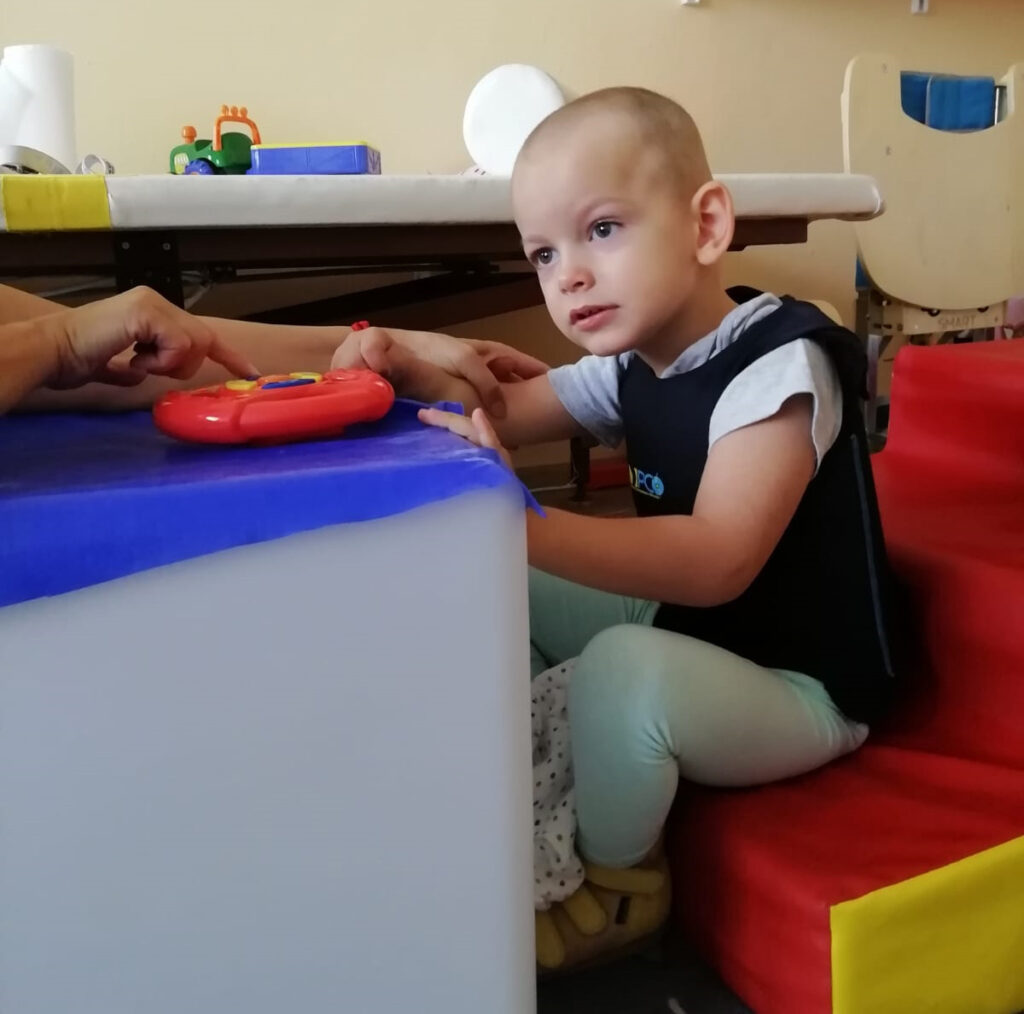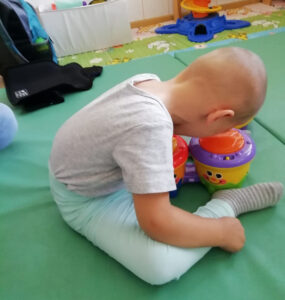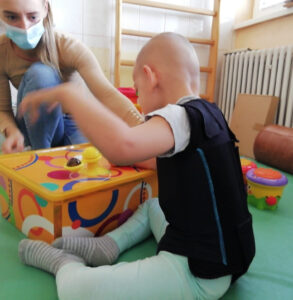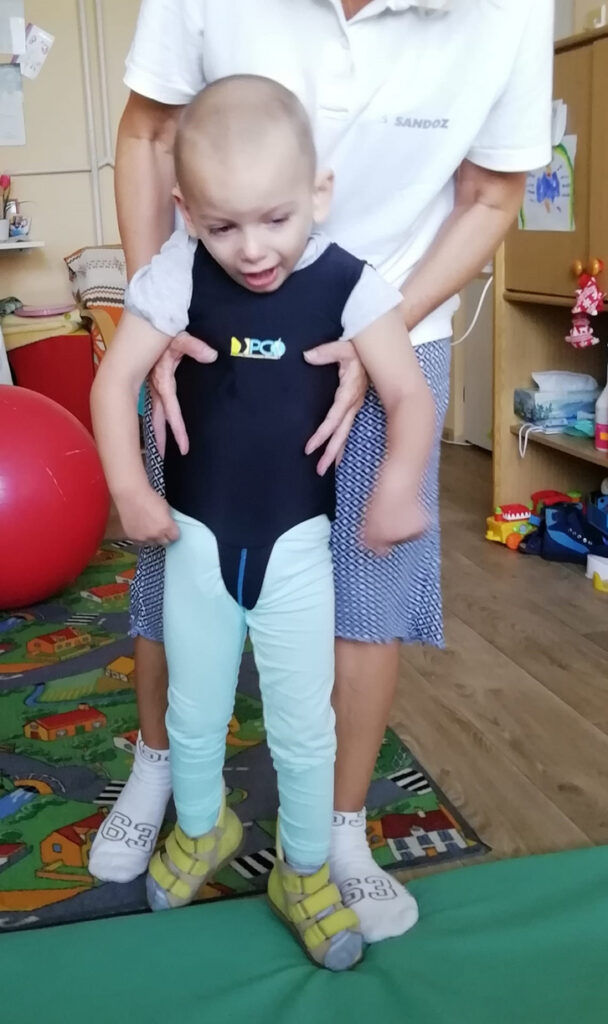Dominik Holtán
Dominik Holtán, was born on 23 September 2018, in the 40th gestational week, weighing 3000 g, 50 cm long, with a negative pre- and perinatal history. In the neonatal period, the development of meningoencephalitis with the etiology of HSV2 (genital herpes) and the development of post-infectious epilepsy with focal motor seizures and impaired consciousness. Operated glaucoma in the left eye. T.č. child in the treatment of secondary epilepsy with a diagnosis of CP quadriplegia with mental regression.
Therapy: locomotion. After worsening of epileptic seizures and gradual resistance to treatment, Vojta’s reflex locomotion was cancelled at the age of 16 months. The NDT Bobath concept was launched in February 2019. At the initial examination, the child was crying, apedally, quadriplegia, more visible spasticity on the right side. Right upper limb without support and grip. The goal of the therapy is increase independency of Dominik in higher positions.
The therapy is performed with or without a PCO torso orthosis, which helps Dominik and the therapist with better control of the head, with activation of the abdominal and back muscles to the core and to release the upper and lower limbs for function. The main function for the upper limbs is the support of the hands with the transmission of the center of gravity and the ability to play. We also perform therapy while standing at the support or in a abduction stand to prevent dislocation of the hip joints.
The difference between the pictures: we see that without a torso orthosis there is a significant kyphosis on the whole spine, the head is suspended, the upper limbs with support only on the left upper limb, the right flexed in the internal rotation. After wearing the PCO orthosis, the kyphosis is corrected, the head is in alignment, the shoulders are directed caudally, the upper limbs are released into the support. Sit more stable.
Standing with a PCO orthosis, we see better control of the head, straightening of core, active work of the torso, flattening of the kyphosis, transfer of the center of gravity to the right side of the body, support of the right upper limb and release of the left upper limb for play.
In therapy with PCO orthosis, we also use the position of a high knee with the transmission of the center of gravity to the right side, with centering in the center of the body.





